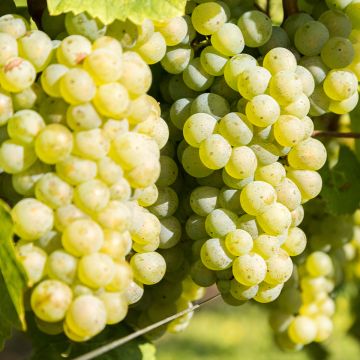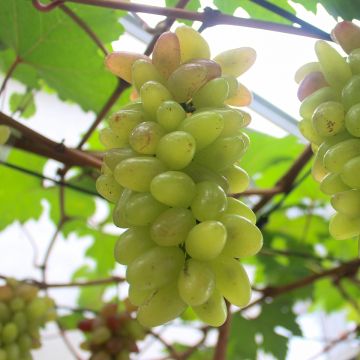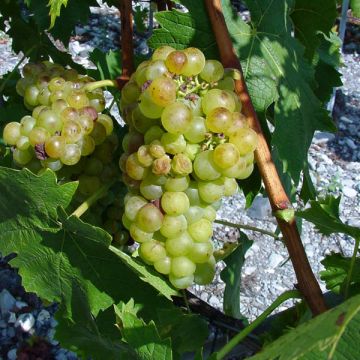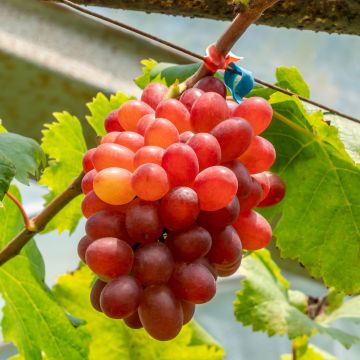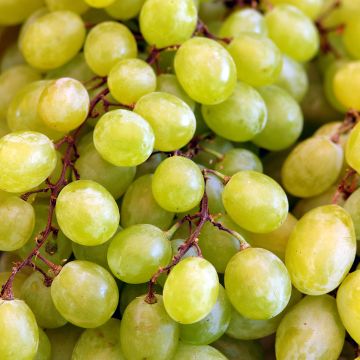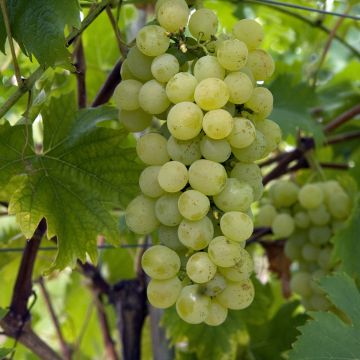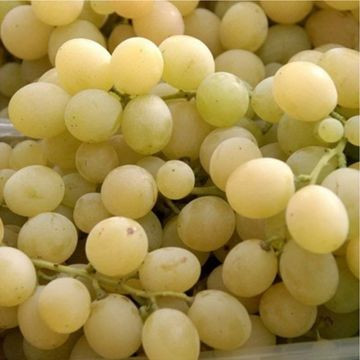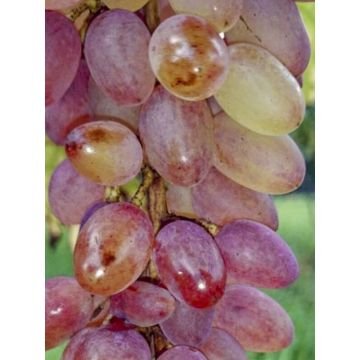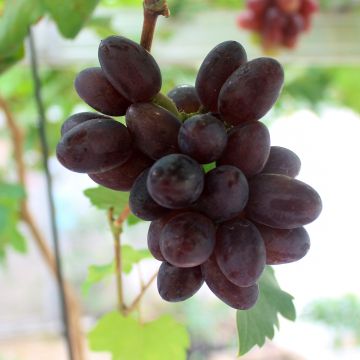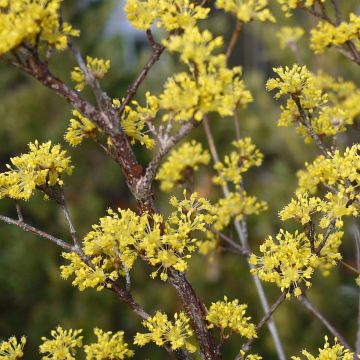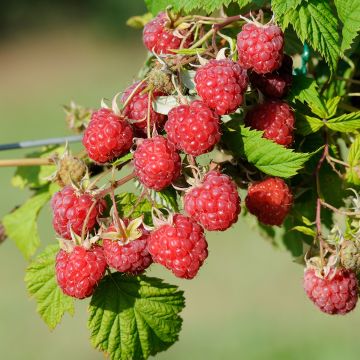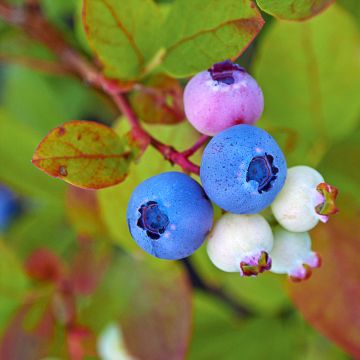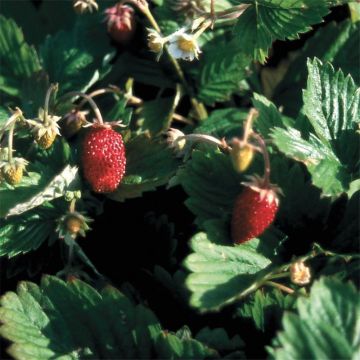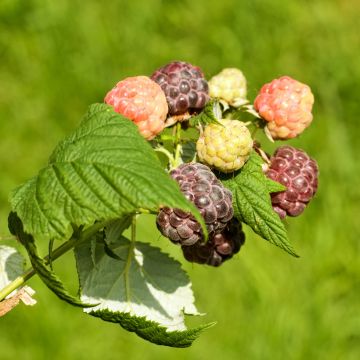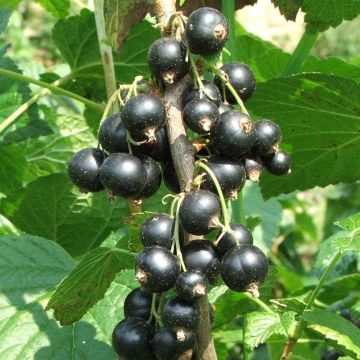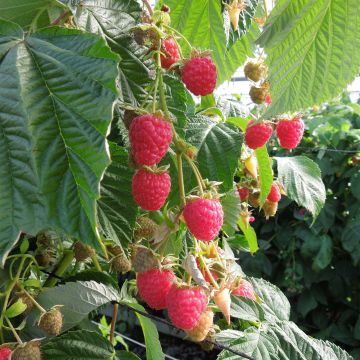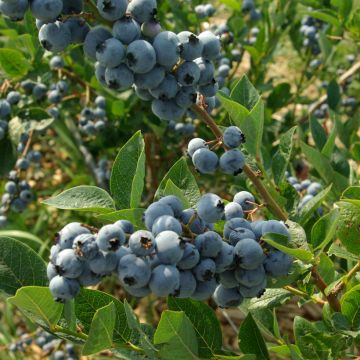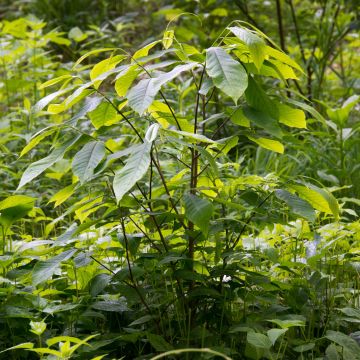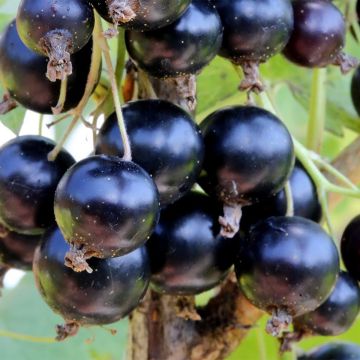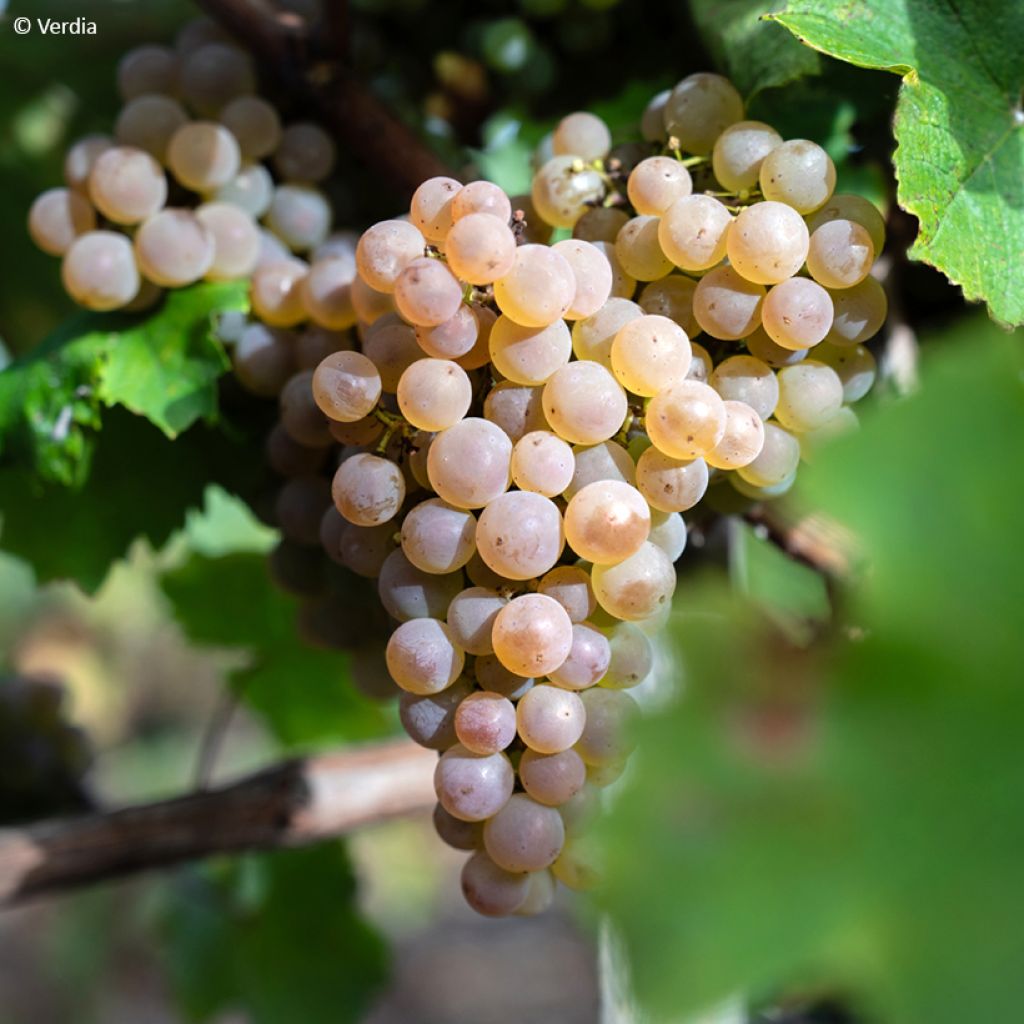

Vitis Nathy-Sauvignac Vign'Happy Fruitality - Grapevine
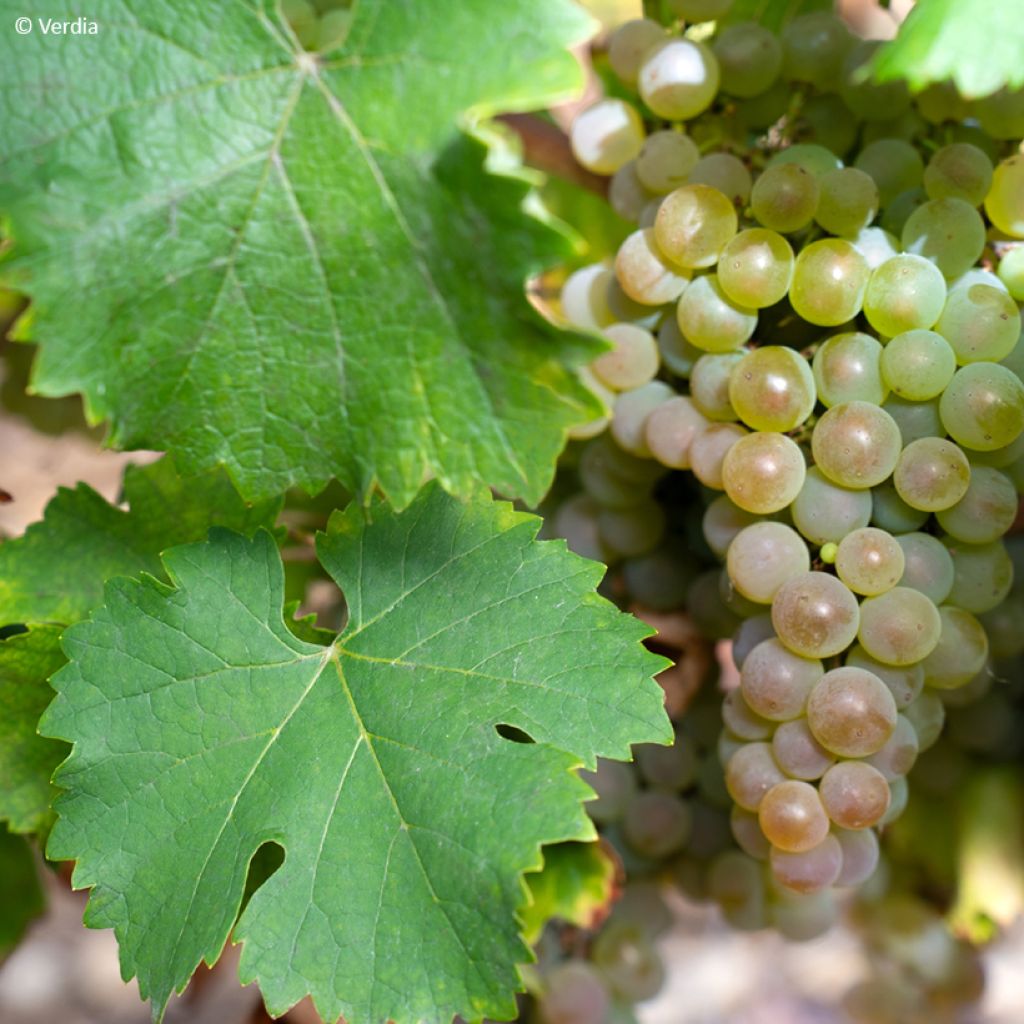

Vitis Nathy-Sauvignac Vign'Happy Fruitality - Grapevine
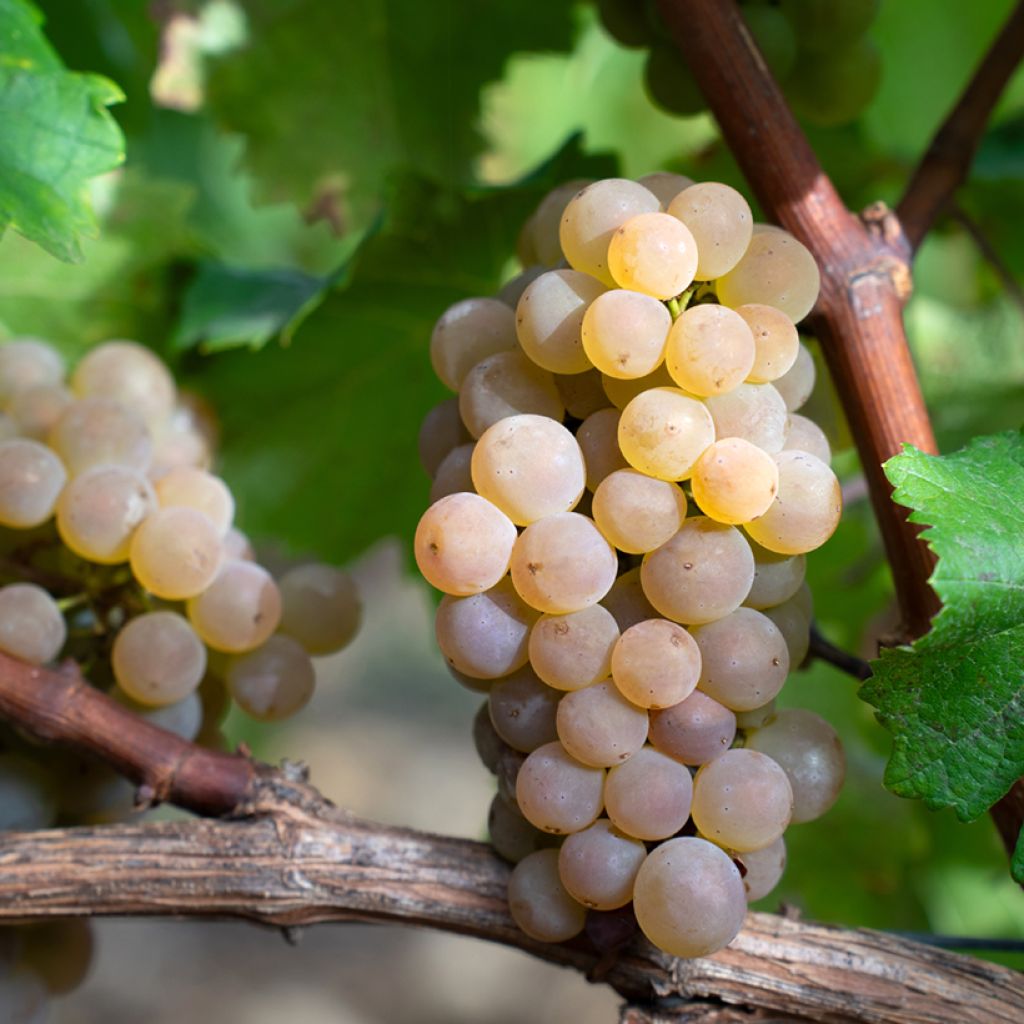

Vitis Nathy-Sauvignac Vign'Happy Fruitality - Grapevine
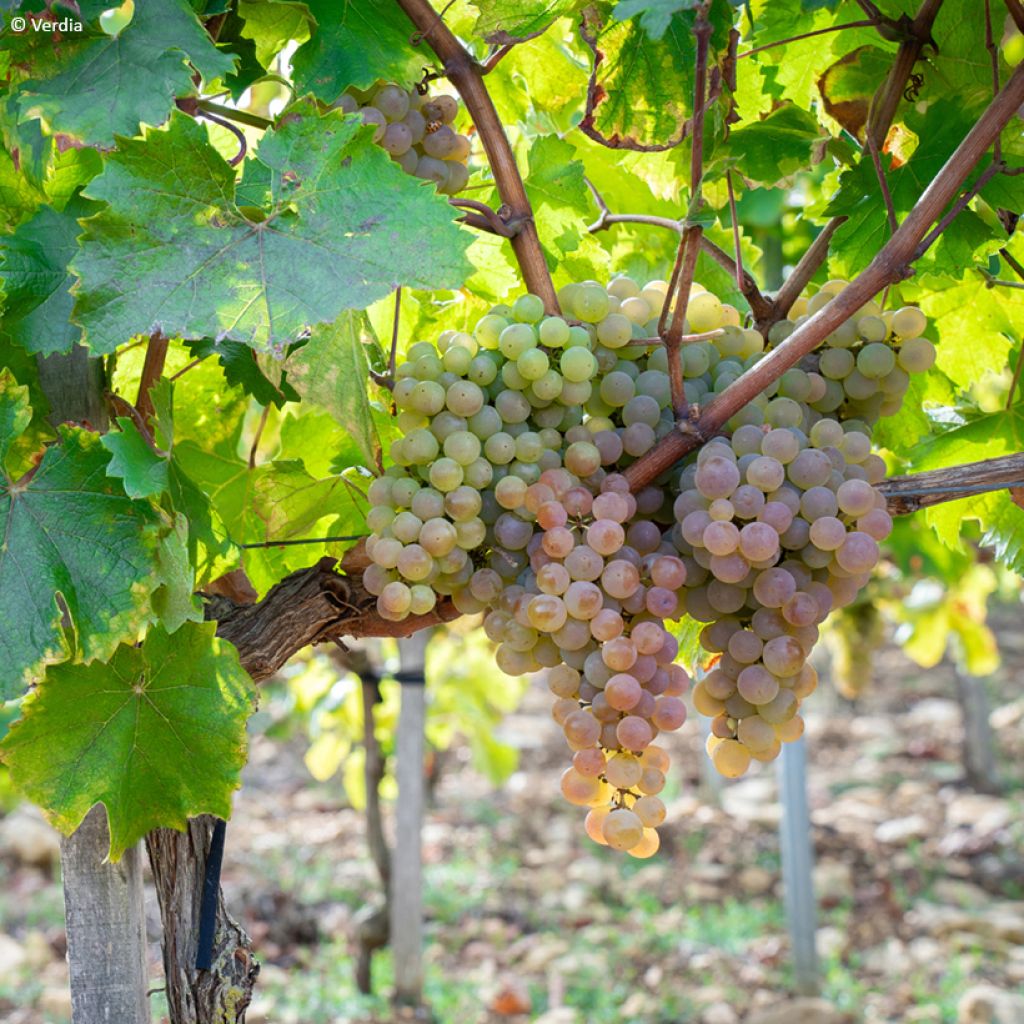

Vitis Nathy-Sauvignac Vign'Happy Fruitality - Grapevine
Vitis Nathy-Sauvignac Vign'Happy Fruitality - Grapevine
Vitis 'Nathy-Sauvignac' Vign'Happy® (Fruitality® / Nathy® Series)
Common Grape Vine, European Grape, Wine Grape
This item cannot be shipped to the selected country
Delivery charge from €5.90
Delivery to Corse prohibited
More information
Schedule delivery date,
and select date in basket
This plant carries a 6 months recovery warranty
More information
We guarantee the quality of our plants for a full growing cycle, and will replace at our expense any plant that fails to recover under normal climatic and planting conditions.
From €5.90 for pickup delivery and €6.90 for home delivery
Express home delivery from €8.90.
Delivery to Corse prohibited: UE law prohibits the import of this plant from mainland France to Corse as part of the fight against Xylella fastidiosa. Please accept our sincere apologies.
More information
Description
Vign’happy® is a 2024 novelty offered in the Fruitality® range of fruit trees for easy-to-grow gourmets. Resulting from a selection program focused on resistance to fungal attacks, this variety perfectly meets the specifications by showing insensitivity to three of the main vine diseases. The plants yield a bountiful harvest that ripens in early September. The large grape clusters then take on a promising golden hue, and the berries reveal themselves to be sweet to taste. Easy to grow in most soils, it also tolerates drought well.
The cultivated Vine, Vitis vinifera, has given its name to the Vitaceae family, which includes 16 other genera, comprising 700 botanical species. While everyone knows the Virginia Creeper, or Parthenocissus, which adorns and colours our walls in autumn, other non-hardy genera only cross paths in apartments or in the greenhouses of botanical gardens, like the giant liana Tetrastigma voinierianum. The wine Vine has been growing wild for over 5000 years in North and Central America, Europe, and Central and Eastern Asia. This liana of the sylvestris subspecies lives alongside trees that serve as support for it to cling and climb several meters in forest edges. Introduced to Provence around 2600 years ago, the vine is cultivated on a large scale, and current varieties, known as grape varieties, are mainly derived from the vinifera subspecies. There are table varieties and others for wine, and some are mixed.
The Vine Nathy-Sauvignac Vign'Happy Fruitality is the result of a cross between two grape varieties, a Sauvignon and a Riesling, and resistant Vitis. The specifications of the Nathy selection program include a qualitative criterion, a high level of disease resistance, and agronomic stability of the subjects. Nathy Sauvignac is the first grape variety in the range, which will expand in the coming years as 22 others are nearing the end of evaluation and 1000 more are still in testing... It is a mixed variety, which will also be vinified for wine, suitable for both the oceanic terroirs of Bordeaux and the Mediterranean coast of Languedoc. The plant has a semi-erect growth, and can be pruned in the classic Guyot style or trained more freely on a pergola or trellis. It produces beautiful leaves, green-yellow in the juvenile stage that then turn green. The leaf blades have three main, weakly lobed lobes, with a regular and fairly pronounced dentate margin. The discreet spring flowering, green, bristly with white-yellow stamens, gradually evolves to give clusters of good size, with stems filling with medium-sized, ovoid-shaped berries. Initially greenish, the berries turn golden in the sun and as they ripen. The yield is rather high compared to other grape varieties, and the grapes are good to harvest from early September. Very high quality, the berries reveal a delicious sweet taste when bitten into, possibly an inheritance from the Riesling?...
With its classified high resistance to downy mildew and powdery mildew, the two major vine diseases, and very high resistance to black rot, which also attacks the foliage and clusters, Vign’happy® will delight enthusiasts eager to be able to organically grow their grapes. Rich in B vitamins, it is a source of fibres and manganese, well provided with antioxidants, and its sweet taste will delight your palate. For variety, plant it alongside a Kiwi, another fruit-bearing climber that will take over from your vine to offer you its tasty fruits at the end of the season. The Goji with its woody climbing stem that you can similarly train will surprise you with its small berries "of the five flavours" red or yellow depending on the variety you choose.
Report an error about the product description
Vitis Nathy-Sauvignac Vign'Happy Fruitality - Grapevine in pictures


Plant habit
Fruit
Flowering
Foliage
Botanical data
Vitis
'Nathy-Sauvignac' Vign'Happy® (Fruitality® / Nathy® Series)
Vitaceae
Common Grape Vine, European Grape, Wine Grape
Cultivar or hybrid
Other Grapevines
Planting and care
Since the ravages of phylloxera at the end of the 19th century, the vine is grafting
Plant the Vine Nathy-Sauvignac in autumn, in a deep, well-drained soil, even rocky, clayey and limestone, knowing that the vine is not demanding regarding the chemical nature of the soil. It is able to assimilate in moderately acidic soil (up to pH 6 approximately, because below this level there are assimilation blockages of certain trace elements), neutral and limestone up to pH 8.5 approximately (knowing that in this case, it is actually the excess of active limestone that is harmful).
Plant it in a sunny exposure, sheltered from strong, cold and dry winds. This variety withstands winter frosts, it is hardy down to -20°C, or even lower. Incorporate into the planting soil 3 or 4 handfuls of fruit tree fertilizer and 2 kg of composted manure for each vine-plant. Be careful, the roots should not be in contact with the manure. After planting, prune above two large buds to initiate the growth of two branches. Keep the most vigorous one and tie it to a stake. This will be followed by the training pruning, knowing that this variety can be pruned short or long, or also trained on a trellis or a pergola.
The vine does not require regular fertilization for good yield, quite the opposite. In too rich soil, the vegetation (leaves) will develop to the detriment of fruiting. Enrich the soil with potassic slag, crushed horn or iron chelate, only every 2-3 years.
This variety exhibits high resistance to powdery mildew and powdery mildew, the two main vine diseases, and exceptional resistance to black-rot. In a year with normal disease pressure, it does not require any phytosanitary treatment.
Planting period
Intended location
Care
This item has not been reviewed yet - be the first to leave a review about it.
Berries
Haven't found what you were looking for?
Hardiness is the lowest winter temperature a plant can endure without suffering serious damage or even dying. However, hardiness is affected by location (a sheltered area, such as a patio), protection (winter cover) and soil type (hardiness is improved by well-drained soil).

Photo Sharing Terms & Conditions
In order to encourage gardeners to interact and share their experiences, Promesse de fleurs offers various media enabling content to be uploaded onto its Site - in particular via the ‘Photo sharing’ module.
The User agrees to refrain from:
- Posting any content that is illegal, prejudicial, insulting, racist, inciteful to hatred, revisionist, contrary to public decency, that infringes on privacy or on the privacy rights of third parties, in particular the publicity rights of persons and goods, intellectual property rights, or the right to privacy.
- Submitting content on behalf of a third party;
- Impersonate the identity of a third party and/or publish any personal information about a third party;
In general, the User undertakes to refrain from any unethical behaviour.
All Content (in particular text, comments, files, images, photos, videos, creative works, etc.), which may be subject to property or intellectual property rights, image or other private rights, shall remain the property of the User, subject to the limited rights granted by the terms of the licence granted by Promesse de fleurs as stated below. Users are at liberty to publish or not to publish such Content on the Site, notably via the ‘Photo Sharing’ facility, and accept that this Content shall be made public and freely accessible, notably on the Internet.
Users further acknowledge, undertake to have ,and guarantee that they hold all necessary rights and permissions to publish such material on the Site, in particular with regard to the legislation in force pertaining to any privacy, property, intellectual property, image, or contractual rights, or rights of any other nature. By publishing such Content on the Site, Users acknowledge accepting full liability as publishers of the Content within the meaning of the law, and grant Promesse de fleurs, free of charge, an inclusive, worldwide licence for the said Content for the entire duration of its publication, including all reproduction, representation, up/downloading, displaying, performing, transmission, and storage rights.
Users also grant permission for their name to be linked to the Content and accept that this link may not always be made available.
By engaging in posting material, Users consent to their Content becoming automatically accessible on the Internet, in particular on other sites and/or blogs and/or web pages of the Promesse de fleurs site, including in particular social pages and the Promesse de fleurs catalogue.
Users may secure the removal of entrusted content free of charge by issuing a simple request via our contact form.
The flowering period indicated on our website applies to countries and regions located in USDA zone 8 (France, the United Kingdom, Ireland, the Netherlands, etc.)
It will vary according to where you live:
- In zones 9 to 10 (Italy, Spain, Greece, etc.), flowering will occur about 2 to 4 weeks earlier.
- In zones 6 to 7 (Germany, Poland, Slovenia, and lower mountainous regions), flowering will be delayed by 2 to 3 weeks.
- In zone 5 (Central Europe, Scandinavia), blooming will be delayed by 3 to 5 weeks.
In temperate climates, pruning of spring-flowering shrubs (forsythia, spireas, etc.) should be done just after flowering.
Pruning of summer-flowering shrubs (Indian Lilac, Perovskia, etc.) can be done in winter or spring.
In cold regions as well as with frost-sensitive plants, avoid pruning too early when severe frosts may still occur.
The planting period indicated on our website applies to countries and regions located in USDA zone 8 (France, United Kingdom, Ireland, Netherlands).
It will vary according to where you live:
- In Mediterranean zones (Marseille, Madrid, Milan, etc.), autumn and winter are the best planting periods.
- In continental zones (Strasbourg, Munich, Vienna, etc.), delay planting by 2 to 3 weeks in spring and bring it forward by 2 to 4 weeks in autumn.
- In mountainous regions (the Alps, Pyrenees, Carpathians, etc.), it is best to plant in late spring (May-June) or late summer (August-September).
The harvesting period indicated on our website applies to countries and regions in USDA zone 8 (France, England, Ireland, the Netherlands).
In colder areas (Scandinavia, Poland, Austria...) fruit and vegetable harvests are likely to be delayed by 3-4 weeks.
In warmer areas (Italy, Spain, Greece, etc.), harvesting will probably take place earlier, depending on weather conditions.
The sowing periods indicated on our website apply to countries and regions within USDA Zone 8 (France, UK, Ireland, Netherlands).
In colder areas (Scandinavia, Poland, Austria...), delay any outdoor sowing by 3-4 weeks, or sow under glass.
In warmer climes (Italy, Spain, Greece, etc.), bring outdoor sowing forward by a few weeks.

































